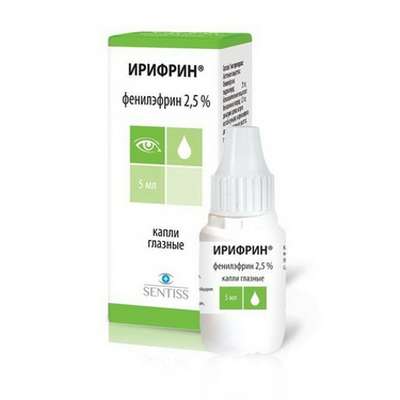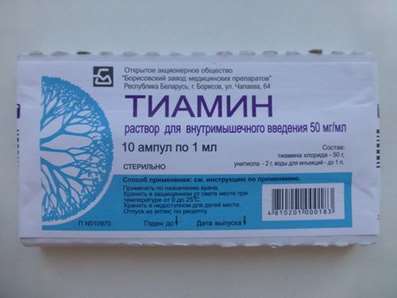Instruction for use: Alfogel
I want this, give me price
Active substance Aluminium phosphate
ATX Code A02AB03 Aluminium phosphate
Pharmacological group
Antacids
Nosological classification (ICD-10)
K20 Esophagitis
Digestive tract infections, Acute erosion of the esophagus, Esophagitis erosive, Erosive esophagitis, Infectious Disease of the GI tract
K21 Gastroesophageal reflux
Biliary reflux esophagitis, gastrocardiac syndrome, Gastroesophageal reflux disease, Gastro-oesophageal reflux disease, Non-erosive reflux disease, syndrome gastrocardiac, Remhelda syndrome, Erosive reflux esophagitis, Ulcerative reflux esophagitis
K25 Gastric ulcer
Helicobacter pylori, Pain syndrome in gastric ulcer, Pain syndrome in gastric ulcer and duodenal ulcer, Inflammation of the gastric mucosa, Inflammation of the gastrointestinal mucosa, Benign gastric ulcer, The disease of the stomach and duodenum, asotsiirovannoe with Helicobacter pylori, Aggravation gastroduodenita on the background of peptic ulcer, Exacerbation of peptic ulcer, The aggravation of gastric ulcer, The organic gastrointestinal disease, Peptic ulcer of the stomach and duodenum, Postoperative gastric ulcer, Recurrent ulcers, Symptomatic gastric ulcers, Chronic inflammatory disease of the upper gastrointestinal tract, associated with Helicobacter pylori, Helicobacter pylori eradication, Erosive and ulcerative lesions of the stomach, Erosive lesions of the stomach, The erosion of the gastric mucosa, Peptic ulcer disease, Stomach ulcer, Gastric lesion, Ulcerative lesions of the stomach, Symptomatic ulcers of the stomach and duodenum
K26 Duodenal Ulcer
Pain with duodenal ulcer, Pain syndrome in gastric ulcer and duodenal ulcer, The disease of the stomach and duodenum, asotsiirovannoe with Helicobacter pylori, Exacerbation of peptic ulcer, The worsening of duodenal ulcer, Peptic ulcer of the stomach and duodenum, Relapse of duodenal ulcers, Symptomatic ulcers of the stomach and duodenum, Helicobacter pylori eradication, Erosive and ulcerative lesions of the duodenum, Erosive-ulcerative lesions of duodenal ulcers associated with Helicobacter pylori, Erosive lesions of the duodenum, Duodenal ulcer, Ulcerative lesions of the duodenum]
K29 Gastritis and duodenitis
Aggravation gastroduodenita on the background of peptic ulcer, duodenitis
K29.5 Chronic gastritis, unspecified
gastroenteritis, Metaplasia gastric mucosa, The pain in chronic gastritis with high acidity, chronic Gastritis, Gastroenteritis, Acute gastroenteritis, Chronic gastritis, Chronic diseases of the digestive system, Chronic autoimmune gastritis, Chronic gastritis, Chronic gastritis in acute stage, Chronic gastritis with normal secretory function, Chronic gastritis with normal secretory function of the stomach, Chronic gastritis with normal secretion, Chronic gastritis with increased and normal gastric secretory function, Chronic gastritis with secretory function, Chronic gastritis with increased secretion, Chronic gastritis with secretory function of the stomach, Chronic gastritis with a reduced secretory function, Chronic gastritis with secretory insufficiency
K29.6.1 * Gastritis is hyperacid
Gastritis with high acidity, Hyperacid gastritis, Pain in acute gastritis with high acidity, Gastritis with increased secretory function, Gastritis chronic hypersecretory, Hyperacid gastritis
K30 Dyspepsia
Fermentation dyspepsia, Hyperacid indigestion, Putrefactive indigestion, Dyspepsia, Dyspepsia, Dyspepsia of nervous origin, Dyspepsia in pregnant women, Dyspepsia fermentation, Dyspepsia putrefactive, Dyspepsia medication, Dyspepsia due to diseases of the digestive system, Dyspepsia due to impaired motility of the gastrointestinal tract, Dyspepsia due to unusual food or overeating, Dyspeptic phenomena during pregnancy, Dyspeptic Syndrome, Gastric indigestion, Delayed emptying of the stomach, Delayed digestion, Idiopathic indigestion, Acid dyspepsia, Disturbance of the upper GI tract motility, Indigestion, Nervous indigestion, Non-ulcer dyspepsia, The feeling of heaviness in the stomach after eating, Postprandial functional dyspepsia, The processes of fermentation in the intestine, Stomach upset, Gastrointestinal disorders, Digestive disorders, Disorders from the digestive tract, Stomach upset, Indigestion disorder, Indigestion in infants, Symptoms of dyspepsia, The syndrome of putrefactive dyspepsia, Syndrome of putrefactive dyspepsia in infants, Syndrome of insufficiency of digestion, Syndrome of nonulcer dyspepsia, Toxic indigestion, Functional dyspepsia, Functional indigestion, Chronic indigestion, Chronic episodes of dyspepsia, Essential dyspepsia, Dyspeptic disorder
K31.8.2 * Hyperacidity of gastric juice
Pathological hypersecretion, Hyperacid indigestion, Hyperadic states, Increased secretion of gastric juice, Increased acid formation, Hyperacidosis,Hyper secretion of gastric juice, Increased acidity of gastric juice, High acidity
R10.1 Pain localized in the upper abdomen
Pain in the stomach, Pain in the upper abdomen, The pain in the epigastric region, epigastric pain, Pain in acute pancreatitis, Pain in the stomach, Epigastric pain, Pain in acute gastritis with high acidity, The pain in chronic gastritis with high acidity, stomachalgia, Discomfort and pain in the epigastric, Gastric discomfort, The feeling of discomfort in the epigastric region, The severity of epigastric, Epigastric pain, Pain in pancreatitis, Discomfort and pain in the epigastric region
R12 Heartburn
T36-T50 Poisoning with medicines, medicines and biological substances
T51-T65 Toxic effect of substances, mainly non-medical use
Z72.4 Unacceptable diet and bad habits in nutrition
Inadequate nutrition, Irregular nutrition, Unbalanced diets, Dyspepsia due to unusual food or overeating, Long-term dietotherapy, Prolonged or low-calorie diets, Gastrointestinal disorders due to a violation of diet, Binge eating, Food poisoning, Errors in the diet, Compliance with diets, Compliance with a strict diet, Special diets
Composition and form of release
Gel for oral administration 1 pack.
aluminum phosphate 8.8 g
auxiliary substances: sorbic acid; bronopol; magnesium hydroxide; pectin; agar-agar; sucrose; saccharin sodium; calcium sulfate; sorbitol; sodium carboxymethyl cellulose; ethanol; orange essence; purified water
in bags of 16 g; in a pack of cardboard 20 bags.
pharmachologic effect
Pharmacological action - antiulcer, adsorbent, enveloping, antacid.
Pharmacodynamics
Neutralizing free hydrochloric acid in the stomach (within 10 minutes increases the pH to 3-3.5), reduces the proteolytic activity of pepsin. The antacid effect is not accompanied by secondary hypersecretion of hydrochloric acid. Forms a protective layer on the mucosa of the gastrointestinal tract. Promotes the removal of toxins and gases throughout the digestive tract.
Pharmacokinetics
Absorption is low. Most aluminum phosphate is insoluble, a small part is precipitated in the intestine in the form of oxides and insoluble carbonates.
Indications
Acute gastritis, chronic gastritis with increased and normal secretory function of the stomach (in the acute phase), acute duodenitis, peptic ulcer of the stomach and duodenum (in the phase of exacerbation), symptomatic ulcers of various genesis, erosion of the gastrointestinal tract, reflux esophagitis (v. in children), hernia of the esophageal opening of the diaphragm, syndrome of nonulcer dyspepsia, poisoning, gastralgia, heartburn (after excess consumption of ethanol, nicotine, coffee, inaccuracies in the diet), gastrointestinal disorders when taking drugs and irritating (acid, alkali).
Contraindications
Hypersensitivity, chronic renal failure, Alzheimer's disease.
Caution is used in elderly patients (it is possible to increase the concentration of aluminum ions in the blood serum).
pregnancy and lactation
Use with caution. Periodic and non-prolonged use in therapeutic doses is possible.
Side effects
Constipation (mainly in elderly patients and bedridden patients).
Interaction
Reduces and slows down the absorption of indomethacin, salicylates, aminazine, phenytoin, H2-histamin blockers, beta-adrenoblockers, diflunizal, isoniazid, tetracycline antibiotics, indirect anticoagulants, barbiturates, so they should be taken 1 hour before or 2 hours after taking Alfogel. m-holinoblokatory, slowing the emptying of the stomach, strengthen and lengthen the action of Alfogel.
Dosing and Administration
Inside, you can in pure form, or before taking the contents of the sachet into 1/2 cup water - 1-2 packs 2-3 times a day; when poisoning, burn with caustic means - 3-5 packs once.
With ulcerative lesions of the gastrointestinal tract, reflux-esophagitis - 1-2 hours after eating and before bedtime, if pain occurs - immediately; with gastroesophageal reflux and diaphragmatic hernia - immediately after meals and at night. Duration of treatment is 15-30 days. Reception of the drug is repeated if pain occurs between doses.
Children: up to 6 months - 4 g (1/4 sachet or 1 tsp) after each of 6 feedings; after 6 months - 8 g (1/2 packet or 2 tsp) after each of 4 feedings.
Overdose
Symptoms: Constipation.
Treatment: laxatives.
special instructions
Long-term treatment is not recommended in case of an unspecified diagnosis.
Storage conditions
In the dark place, in a well-ukuporennoy container, at a temperature of 15-25 ° C.
Keep out of the reach of children.
Shelf Life
3 years.
Do not use after the expiry date printed on the package.

 Cart
Cart





